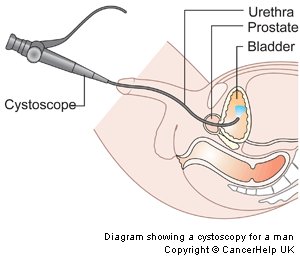Cystoscopy: Preparation and how it is done
The cystoscopy technique is performed with a probe with a tiny built-in camera (so called cystoscope) to examine the urethra and bladder. It is a procedure that also allows exploring the tissues in the area to determine a more accurate diagnosis.
It is a routine test that is prescribed for determining the cause of the presence of blood in the urine or other symptoms such as painful urination, problems with recurrent infections of the urinary tract or the possible presence of kidney stones or tumors. A test that does not require a specific preparation for the patient, except prescribing antibiotics for preventive purposes. The examination is conducted by introducing the cystoscope into the bladder through the urethra.
The preparation
The preparation for cystoscopy does not require special measures. The doctor, as part of the protocol may prescribe antibiotics to reduce the risk of urinary tract infections.
In the case of patients especially nervous or to show test anxiety, you can take a sedative. The doctors also recommend temporarily suspend the use of anticoagulants, if they are taking. In case of need general anesthesia or spinal anesthesia, the patient should not eat or drink anything for a period of time ranging from 4-8 hours before the test.
how it is done
Generally the use of anesthesia is not required, however, if during the examination the patient has felt particularly upset, doctor may decide to postpone the procedure and do it in the following days with the use of anesthesia. During the test using a cystoscope, a thin, flexible tube is gently inserted into the bladder through the urethra. At the end of the cystoscope connects a small chamber, through which images are transmitted to the external monitor.
To improve the view of the bladder, the urologist inserts a liquid that used to distend the walls. If necessary, doctor can enter, through the cystoscope, surgical instruments, which serve, for example, for removal of kidney stones or carry out biopsies of the bladder. Usually, the procedure takes several minutes and is not very annoying for the patient.
